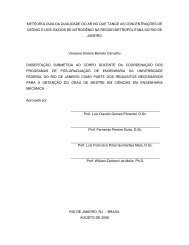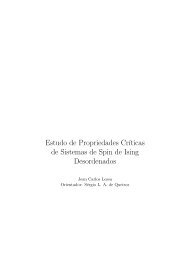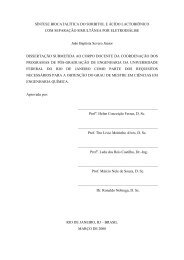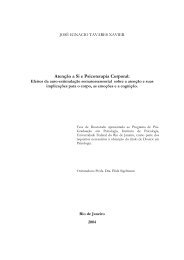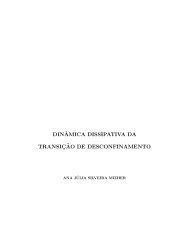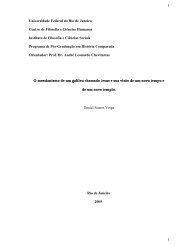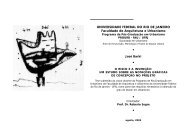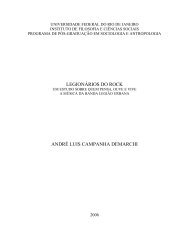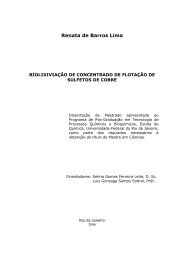O PARAPLÉGICO NO MERCADO DE TRABALHO – A ... - UFRJ
O PARAPLÉGICO NO MERCADO DE TRABALHO – A ... - UFRJ
O PARAPLÉGICO NO MERCADO DE TRABALHO – A ... - UFRJ
Create successful ePaper yourself
Turn your PDF publications into a flip-book with our unique Google optimized e-Paper software.
ABSTRACT<br />
THE WHEEL CHAIR BOUND INDIVIDUAL IN THE WORK MARKET <strong>–</strong> THE<br />
PERCEPTION OF WORKERS WHO ARE <strong>NO</strong>T MOTOR DISABLED:<br />
Nursing subsidy for multiprofessional team<br />
Rachel Ferreira Savary Figueiró<br />
Orientadora: Regina Célia Gollner Zeitoune<br />
Abstract da Tese de Doutorado submetida ao Programa de Pós-graduação em<br />
Enfermagem, Escola de Enfermagem Anna Nery da Universidade Federal do Rio de Janeiro -<br />
<strong>UFRJ</strong>, como parte dos requisitos necessários à obtenção do título de Doutor em Enfermagem.<br />
Study on the worker’s perception who does not suffer from motor disability towards the<br />
wheel chair bound individual in the work context. Objectives: to describe the perception such<br />
workers have about the wheel chair bound individual at work; to analyse, in the subjects’s<br />
perception, attitudes that might represent a stigmatising posture towards the wheel chair<br />
bound individual in the work context; to discuss the implications of such perception vis-a-vis<br />
the inclusion of the wheel chair bound individual in the occupational context, in the light of<br />
the Worker’s Health. The theoretical support has based itself, among others, on Erving<br />
Goffman (1988,2005) and Carolyn Vash (1988), Qualitative approach, guided by the dialetic<br />
principles. The data was gathered through semi-structured interviews at the subjects’s place<br />
of work. The results have revealed that the subjects perceive the disability as a feature of the<br />
disabled individual and not as a condition socially constructed, which transforms difficulty in<br />
lack of ability; the family, as well as the rehabilitation treatment have been shown as tools so<br />
that the wheel chair bound individual could acquire the necessary skills in order to join and<br />
remain in the work market; that the stigmatising notion of the disabled individual constitutes,<br />
indeed, a reality which is part of the occupational environment, more expressive among<br />
younger age groups, regardless their school background; it bears no coherence with the real<br />
limitations of the wheel chair bound individual. Such behaviour will have a negative<br />
repercussion upon the wheel chair bound worker’s health, who does not feel valued by the<br />
group he/she works with. Feeling his/her effort neglected and feeling ostracized due to<br />
his/her physical disability, his/her self-esteem is shattered, which, sooner or later, provokes<br />
the need of taking leaves or triggers accidents at work.<br />
Key-words: Worker; Wheel chair bound individual, Disability; Stigma.<br />
10



